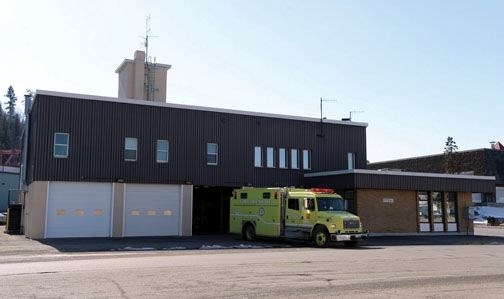Prince George's fire department needs to build a new fire hall and hire as many as 20 more firefighters to meet the demands unique to the city, according to a report to city council.
"(Fire Hall No. 1) is inefficient in terms of space, it is too small and it is not suitable for renovation," said Dave Mitchell, author of the extensive Standards of Cover report with 50 years of experience in the fire service.
The hall's current location, on Seventh Avenue, leaves a service gap to the south part of the city and the industrial B.C. Rail area. A larger facility that has at minimum four drive-through bays located near Victoria and 20th Avenue would be a prime spot, the report said.
The city has a budget for the design work once it settles on a location, said city manager Kathleen Soltis.
Soltis said staff would prepare a report for council and also look at the staffing numbers, which would be brought forward during the budget talks in the fall.
With 52 per cent of the department's entire call volume, and projections that it will only get busier, Fire Hall No. 1 doesn't have enough staff to send 14 firefighters to a structure fire within eight minutes.
Eight minutes is the magic number to get to a fire before it spreads, to lower the chances for casualties and damages to the structure. As it stands, the fire department has to pull from its two halls near downtown to make up 11 fighters, and also turn to the halls in College Heights and the Hart if it hopes to make the desired total of 14.
"The department rarely meets the standard," said Mitchell.
Between 2009 and 2014, it only achieved that number eight times out of 248 fires. In the last three years, it happened one time, and the last two years, none at all.
Council heard Prince George would need 16 new firefighters to staff a full unit as recommended, but Chief John Iverson asked for more to address leaves or absences.
Prince George is considered a "full-service department," the highest category it could achieve, given the types of fires and emergencies it responds to. Only Burnaby has an oil refinery in its midst, so it was difficult for Mitchell find a truly comparable cities when drawing up the report. In the end, Mitchell chose Kamloops and Nanaimo.
"They were chosen for population, similar risks, similar call volumes and that they were stand-alone in terms of neighbouring communities," he said.
The value of fire losses for Prince George is more than six times its counterparts. Where Kamloops and Nanaimo had $239 and $136 per capita, respectively, Prince Goerge spiked a whopping $2,667.
That rang up a total more than $192 million in a five-year period to 2014, compared to just over $21 million for Kamloops, with a population of 88,084. Prince George had a lower number of total incidents, at 6,075 with both Kamloops and Nanaimo each reporting over 7,000.
Those numbers "are staggeringly different," Mitchell said, even if recent major fires like the Lakeland Mills explosion were removed from the equation.
Prince George has three industrial sites that categorized as maximum risk, a cluster in the main core of the city that are considered "significant risk" and some that are moderate, but also cluster in the core.
"The core area of the city has a large call load, it has a large risk load," said Mitchell, who challenged the belief that the number of fires is reducing. In Prince George, that trend has gone up. A graph showed 113 structure fires in 2014, up more than 10 than each of the five years before, except for a peak in 2012 of 117.
Mitchell also recommended more training and better tracking of that training by the city so it could survive an audit. Most of the fire halls are "dynamic," with varying level of calls based on the hour, day or month. May, for example is the busiest month and February the quietest. Weekends see the most activity and Monday is often slow, so Mitchell recommended the department take that into account when scheduling equipment maintenance or training.
Addressing staffing to meet the ideal can take into account those fluctuations.
"It doesn't require a one-size fits all solution," he said. "It's almost like an organism in its way, that it changes so dynamically and we want to make sure we can tailor the response."



